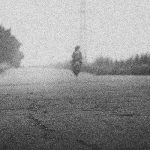
A Special Calling
Turning ducks on a dime
“In November,” the old man said, “even the
rattlesnakes don’t like to bite people.”
— Robert Ruark, The Old Man’s Boy Grows Older
By Tom Bryant
I’ve lived a bunch of Novembers, and each of them, although different, has carried a smidgen of sameness that has always made that special time of year one of the best.
If you’re an outdoorsman camping, hunting, fishing or just walking through the woods, November is the time that brings the rest of autumn into sharp focus. The sky is bluer, the air more fresh and crisp. All the animals seem more alive and alert. Ducks are in the middle of their migration south; male deer are in rut with necks swollen and antlers all scrubbed free of velvet. They’re prancing around looking for does. And if there are any quail, they’re alert, on the lookout for birddogs and hunters.
When I was a youngster, September meant going back to school, getting new books, and learning. It also meant the beginning of dove season, which made the month more palatable for me. Of course, I’d rather have been in the woods than in a classroom.
September went by in a flash and brought October, opening more hunting seasons and the first really cool weather that improved lake and river fishing.
October was the month to get ready. The older I get, the more getting ready there seems to be. In the long run, the preparation is better than the event itself. Seeing as how I’m a duck hunter more than anything else, in the weeks of October I’m in a dither rounding up all my equipment: waders, decoys, waterproof hunting coats, cold weather gear like wool shirts, socks and real necessities like long underwear. Duck boats have to be checked, canoes need to be updated with fresh camouflage, and duck calls need to be tried and, if necessary, retuned.
Over the years, I’ve collected a plethora of duck calls and have become somewhat proficient in using them. It really is quite an art. I can call a duck with my favorite call, but my call is nothing like that of a duck hunting guide I had the good luck to meet many years ago.
His name is Bill NightSky and he’s a Chippewa Indian who lives on the reservation close to Lake St. Clair in Canada. Bill is tall, about 6 feet, slender and moves with the natural grace of an athlete. He speaks with a slight accent. I think he enjoyed listening to a Southern accent because he smiled a lot when I answered questions about what duck hunting was like in the South. When we were heading out to his duck blind on Lake St. Clair and talking about calling ducks, he said to me, “You know, Tom, I don’t doubt you can call ducks using that special call hanging around your neck, but there isn’t a white man alive who can turn a duck like a Chippewa Indian. I’ll prove it to you this morning.”
And prove it he did. It was a weeklong trip. We flew to Detroit, spent one uneventful hour there, rented a van and drove across the river to Canada. At the border, we were thoroughly questioned by a guard about our guns. When she asked me if we had handguns, I laughed and replied, “Ma’am, I have a hard enough time hitting a duck with a shotgun, much less a handgun.” She didn’t smile or respond. I did get her to grin a little when I told her we were Southerners, had grown up with guns, and didn’t understand all the red tape in crossing the border. She even let us cross without unloading all our stuff from the car.
We had booked our rooms in a small hotel just a few miles from the Chippewa village and met our guide, Bill, early the next morning at an ice skating rink right outside the reservation. It was a real learning experience for me, my first visit to a tribal homeland. They had their own economy and government including game regulations and game wardens, police and, unfortunately, poverty. The destitution we encountered on the reservation was distressing. It was an eye-opening experience made more so by the goodwill we felt from our host and the natives we met when we hunted with them.
Bill split our party of four so that two of us went with another guide to the marsh bordering the lake, and Tom Bobo and I stayed with Bill to hunt from a small island a mile or so into Lake St. Clair.
The morning was misty and cold with a heavy frost, but in no time, we were hunkered down in the reeds looking out to open water and watching for ducks. Bill had put out just a few decoys, mostly big ducks like mallards, blacks and a couple of pintails. We were ready and waiting.
“I’m anxious to hear you blow your call,” I said to Bill. “What kind are you using?”
“The most natural one you can find,” he replied. “Watch, there are ducks heading our way.”
About eight or 10 ducks circled high above us, looking as if they were going to continue on down the lake. Bill cupped his hand over his mouth and did some chuckling that sounded exactly like a hungry mallard that had just discovered the mother lode of corn. The ducks put on the air brakes, turned on a dime and headed right back to our decoys. Bill did that same remarkable calling all morning using his mouth. No manufactured call. It was amazing.
As astonishing as it was to watch Bill NightSky call ducks with his mouth and hands, I still have to use a handmade wooden call. Not long ago, I had the opportunity to meet a young fellow from the Raleigh area who carves duck calls. They are more than a functional way to attract ducks. The calls he builds are works of art.
For me, a duck hunter who has lived through many seasons, it’s a pleasure to meet another duck-calling enthusiast, especially one as young as Tom Padden. Tom has turned his hobby into a business. If you’re lucky enough to get on the list for one of his handmade calls, I’m sure it will be a prized addition to your collection.
While we were having lunch, Tom showed me several pictures on his smart phone of duck calls he has made. Each one was remarkable. Looks are one thing, but when I asked him how they sound, he replied good naturedly, “Like a duck.”
I was fortunate several years ago to meet my cousin’s husband’s brother, who is an avid duck hunter and builds his own calls. He is also South Carolina’s duck-calling champion, for what year I don’t remember. I convinced him to make me three calls. I kept one and gave the other two to good hunting buddies. They are strictly utilitarian in looks, but man, they do the job.
I plan on getting young Padden to make me a call this winter and can’t wait to add it to my collection. By the way, if you’re interested, his business is Birddog Outdoor Inc. in Cary, North Carolina. Get in touch. Probably, you’ll have to be added to the list, right under my name. PS
Tom Bryant, a Southern Pines resident, is a lifelong outdoorsman and PineStraw’s Sporting Life columnist.





